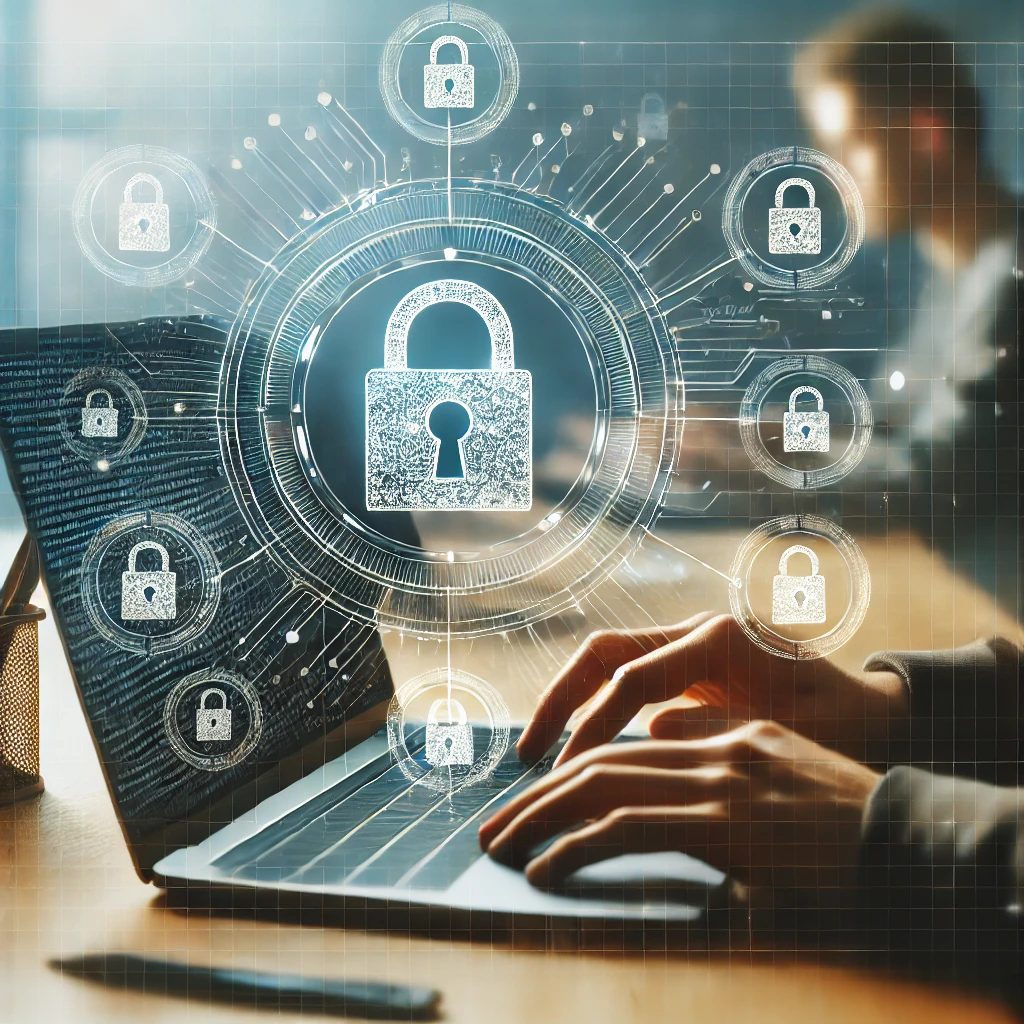Have you ever wondered if the personal and business data you store is truly secure? Imagine one day discovering that all the information you considered protected has been accessible by unknown people for months. How do you think this would affect your life or your business? Keep this question in mind as we explore how systems audits and information security work to protect us from such situations.
What is a Systems and Information Security Audit?
A systems and information security audit is a thorough examination conducted to verify whether a company’s information systems are secure, efficient, and aligned with organizational goals. This process includes evaluating the effectiveness of physical and logical controls that protect information systems from unauthorized access and cyber attacks.
Main Functions of a Systems Audit
- Cybersecurity Assessment: Ensures that information systems are protected against external and internal threats.
- Review of Internal Controls: Ensures that established controls function correctly to mitigate risks.
- Regulatory Compliance: Confirms that the organization complies with relevant laws and regulations.
Who Needs a Systems Audit?
- Small and Medium-sized Enterprises (SMEs): Often believe they are not targets for attacks, but the reality is that they are usually the most vulnerable.
- Large Corporations: Due to their large amount of data and transactions, a security failure can have catastrophic consequences.
- Government Organizations: Must protect sensitive data and comply with strict security standards.
Importance of Information Security
Information security is not just about protecting data against unauthorized access, but also ensuring that information is integral and available to those who need it when they need it. Without adequate information security, companies could face economic losses, damage to their reputation, and significant legal issues.
How Security Affects Everyday Life
- Secure Financial Transactions: From paying at a store to making bank transfers.
- Consumer Confidence: Robust security fosters customer trust and can be a significant selling point.
- Protection Against Identity Theft: Ensures that your personal information does not fall into the wrong hands.
Types of Systems and Security Audits
Audits can vary depending on the specific nature and needs of each organization. Below, we will describe the most common types of audits that help companies keep their systems secure and efficient.
Internal Audit
Conducted by auditors who are employees of the organization, its purpose is to provide ongoing assessment of the performance and security of internal systems. This audit helps detect issues before they become serious threats.
External Audit
Carried out by an independent firm, this audit provides an objective and conflict-free assessment of an organization’s controls and systems. It is crucial for companies seeking credibility and trust from third parties, such as investors or regulators.
Compliance Audit
Focuses on ensuring that the organization complies with applicable regulations and laws. This is especially important in highly regulated industries such as banking, healthcare, and telecommunications.
Vulnerability Audit
Identifies and classifies vulnerabilities in information systems. This audit provides a basis for implementing security improvements and developing risk mitigation policies.
How a Systems Audit is Conducted
A systems audit is a detailed process involving several essential steps to ensure that all aspects of information systems are properly examined.
Planning
The audit begins with a planning phase where the scope and objectives are defined. Key systems and processes to be examined are selected, and a schedule is established.
Risk Assessment
Auditors perform a risk assessment to identify areas where the organization is most vulnerable. This helps prioritize audit efforts in areas that need the most attention.
Control Tests
Tests are conducted to verify the effectiveness of internal controls. This includes penetration testing, software analysis, and review of security procedures.
Report and Recommendations
At the end of the audit, a detailed report is prepared that includes findings and recommendations for improving the security and efficiency of systems. This report is crucial for continuous improvement efforts.
Follow-up
Finally, follow-up is conducted to ensure that the recommendations are implemented properly and that the changes made have the desired effect on information security.
Best Practices in Systems Audit and Information Security
Conducting an effective audit is not only about following a structured process but also adopting a set of best practices that ensure optimal results and continuous improvements in security. Here we detail some of the most effective practices.
Maintain a Risk-Based Perspective
It is crucial that audits focus on significant risks to the organization. Identifying and prioritizing risks allows auditors to concentrate their efforts where they are most needed, thus ensuring an efficient use of resources.
Continuous Update of Knowledge
The field of technology and cybersecurity is constantly evolving, so it is essential for auditors to stay updated with the latest trends, technologies, and threats. This allows them to identify vulnerabilities that might go unnoticed with more outdated approaches.
Use of Advanced Tools and Technologies
Using specialized software and tools is essential for conducting thorough and accurate tests. These tools can automate repetitive and complex tests, increasing the efficiency and coverage of the audit.
Effective Communication
Clear and effective communication between auditors and members of the organization is vital for the success of the audit. This includes openly discussing findings, concerns, and recommendations to ensure that all involved understand the results and necessary actions.
Detailed Documentation
Meticulously documenting every aspect of the audit not only helps maintain a record of what has been done but also provides a basis for future audits and enhances the transparency of the process.
Strategies for a Successful Audit
Implementing a successful systems and information security audit requires more than simply following standard procedures; it also involves specific strategies to address the unique challenges of each organization.
Integration with Company Culture
The audit should be integrated into the company’s culture, with a focus on improving systems and processes rather than just pointing out faults. Fostering a security culture increases employee cooperation and improves the implementation of necessary changes.
Proactive Approach
Adopting a proactive approach to identifying and mitigating risks before they become problems is more effective than a reactive approach. This may include conducting regular audits and constantly updating security policies.
Continuous Monitoring
The audit should not be seen as an isolated process, but as part of a continuous improvement process. Regular monitoring ensures that recommendations are implemented properly and allows for adjustments as needed.
Case Studies: Systems Audits in Action
Case Study 1: Data Leak Prevention in a Technology Company
Situation: An emerging technology company experienced multiple minor security incidents, leading to a comprehensive systems audit to assess its vulnerabilities.
Process: The audit revealed that although the company had basic security controls, it lacked advanced measures such as data encryption at rest and robust multi-factor authentication. Risk assessment prioritized these areas due to the sensitive nature of the information handled.
Outcome: After implementing the audit recommendations, the company strengthened its security infrastructure, resulting in a significant reduction in incidents. Additionally, it improved customer confidence by demonstrating a proactive commitment to security.
Case Study 2: Regulatory Compliance in the Financial Sector
Situation: A bank was facing an imminent regulatory audit and needed to ensure compliance with all current data protection and financial transaction regulations.
Process: The external audit focused on internal controls, security policies, and compliance with specific financial sector regulations. Penetration tests were conducted, and incident response procedures were evaluated.
Outcome: The bank not only met the regulations but also identified several areas for improvement, which were addressed to further strengthen its security. This reinforced its reputation as a safe and reliable institution.
Case Study 3: Enhancing Security in a Government Organization
Situation: A government agency responsible for sensitive citizen data needed to update its security system to prevent unauthorized access and potential cyber attacks.
Process: The internal audit detailed a multi-faceted approach that included reviewing network architecture, assessing physical security, and training employees in security best practices.
Outcome: The improvements implemented resulted in reinforced security and better ability to manage and respond to security threats, thereby ensuring the protection of critical information.
Integrating Audits into the Long-Term Security Strategy
Audits should not be seen as isolated events or responses to specific incidents. Instead, they should be integrated as key components of a continuous security strategy that evolves along with emerging technologies and changing threat tactics. Here are the keys to doing it effectively:
Establish a Regular Audit Cycle
Organizations should establish a schedule of regular audits, adjusting the frequency based on how quickly their technological and threat environments change. This could mean annual, semi-annual, or even quarterly audits in high-risk environments.
Integration with Risk Assessments
Audits should work hand-in-hand with ongoing risk assessments to identify new vulnerabilities and emerging threats. This allows audits to focus on the areas of greatest risk, ensuring that resources are used optimally.
Continuous Training and Awareness
Training employees on the importance of security and the role that audits play in protecting information is crucial. Regular training can help keep everyone in the organization informed and vigilant.
Implementation of Recommendations
For an audit to be effective, recommendations must be implemented in a timely manner and reviewed regularly to assess their effectiveness. This may require investments in technology, changes in internal processes, or updates to security policies.
Use of Advanced Technology
Adopting advanced technology to conduct and facilitate audits can significantly improve their efficiency and effectiveness. Tools such as artificial intelligence and machine learning can help analyze large volumes of data and detect anomalies that might indicate security issues.
Creating an Open Dialogue
Fostering an environment where employees feel comfortable reporting irregularities and where the findings of audits are openly discussed can improve the security culture of the organization. This also helps ensure that audit efforts are seen as part of an organizational commitment to security, rather than as a punitive inspection.
Conclusion: Security is a Continuous Journey
Systems and information security audits are essential for protecting critical assets, complying with regulations, and building customer trust. By integrating audits into the organization’s security strategy, companies can not only respond to incidents but also anticipate and prevent them. Let’s always remember that security is not a destination, but a continuous process of adaptation and improvement.
This proactive approach not only better protects sensitive information but also strengthens the company’s position in a market increasingly dependent on technology and information.


